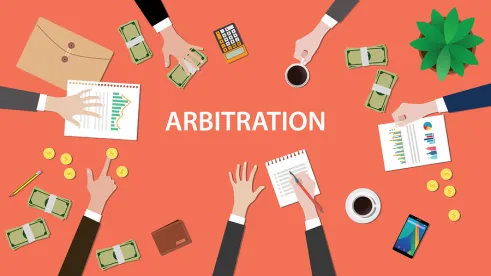Arbitration clauses with class action waivers remain one of the most effective tools that consumer-facing companies can employ to fend off consumer class action litigation. Yet many companies stumble both in getting their customers to agree to the arbitration clause and in drafting a clause that captures all claims that they might face. As we continue to work, shop, and engage with the world from home, companies should perform a quick “health-check” of their arbitration clause, asking themselves at least the following questions:
(1) If you contract with your customers through formally executed documents, do you ensure that your customers execute those documents? Do you maintain records sufficient to prove that your customers signed the contracts? If you use e-signatures, is the process compliant with the federal E-Sign Act and any state equivalents such as California’s Uniform Electronic Transactions Act (UETA), Civil Code section 1633.1 et seq.?
(2) If you engage your customers online, does your website have a sign-in, sign-up, or purchase process that results in an enforceable agreement?
(a) When signing in, signing up, or making a purchase on your website, are customers asked to check a box confirming agreement to a set of terms and conditions? If so, is the box pre-checked? It shouldn’t be.
(b) If customers aren’t asked to check a box to confirm their agreement to a set of terms, are they explicitly told that by signing in, signing up, continuing with the website, or making a purchase that they are agreeing to the set of terms and conditions? Does your website say something like: “By signing up, you agree to the Terms and Conditions”?
(c) Is the above sentence (or something like it) near the button that has to be clicked to sign up, sign in, continue, or make a purchase? Is it above the button or below it? Is the sentence near images or other material that might draw attention away from it? Is it near other text that might confuse a customer? Is the font large enough? Is the font color visible? Could a customer reasonably claim that they would not have seen the sentence?
(e) Does the sentence, or the sentence next to a check box if a check box is used, have a hyperlink to the terms that is noticeable and identifiable as a hyperlink? Is the hyperlink underlined? Is it in a different color font? Does the hyperlink actually take the customer to the correct set of terms? Could a customer reasonably claim that they did not know that there was a hyperlink?
(f) Does your website follow the same process each time a customer signs up, signs in, or makes a purchase?
(g) If you allow signing up, signing in, or payment via a third-party application (e.g., sign in through Facebook or pay with PayPal), are you still ensuring agreement to your company’s set of terms and conditions?
(h) Do you maintain records sufficient to prove the website design and content of the sign-up, sign-in, and purchase page?
(3) If you engage your customers on a mobile website or through an application, all of the above questions should be asked. In addition:
(a) Does a pop-up keyboard block the sentence notifying customers of the terms and conditions?
(b) Is the hyperlink a real link? Does it look like a hyperlink?
(4) Is your arbitration clause broad enough? Does it cover all claims that a customer may assert? Does it cover claims brought against you resulting from actions taken by your agents? Does it cover claims asserted against your agents? Does it cover claims against all entities that may be sued, including all of your affiliates? Does it cover all claims that may arise in the future and claims that arose in the past?
(5) Does your arbitration clause include a class action waiver?
(6) Does your arbitration clause comply with consumer arbitration standards? Most arbitration tribunals have minimum requirements for consumer arbitrations, and some require that the clause be registered and pre-approved by the tribunal.
(7) Does your arbitration clause grant a court or the arbitrator the authority to determine whether a claim must be arbitrated?
(8) If you do business in California or with California-based customers, does your arbitration clause and set of terms more generally prohibit the award of public injunctive relief? Does it include a poison pill? Does it run afoul of McGill v. CitiBank, N.A., 2 Cal.5th 945 (2017). For more information about McGill and these issues, please see here and here.
(9) If you engage your customers through a variety of different agreements (purchase or service contracts, website terms of use, rewards programs, and so forth), all of the above questions should be asked about each. And does each separate contract have the same arbitration clause?
The above questions may not cover everything that you and your company should consider when it comes to implementing or updating an arbitration clause. And not all of the above may apply in every circumstance. Crafting an arbitration solution for each company, satisfying the concerns and desires of the legal department, the marketing department, and the business teams can sometimes be challenging, but it should be done




 />i
/>i

